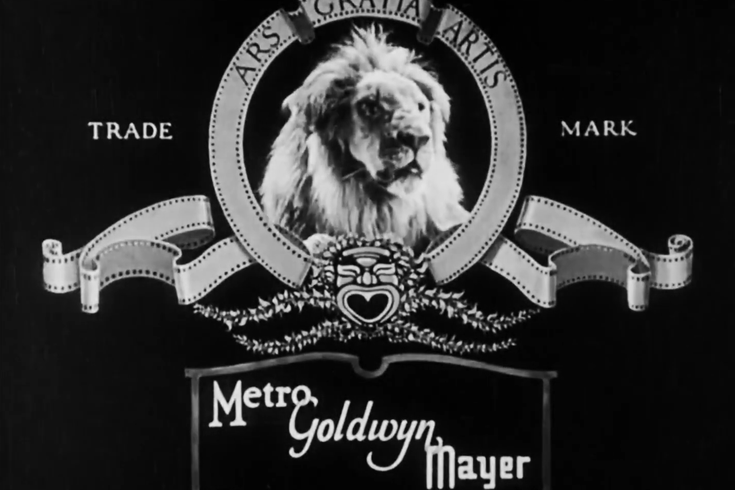
July 01, 2024
 Public domain/Wikicommons
Public domain/Wikicommons
The lion that retired to the Philadelphia Zoo was most likely Slats, the lion that appeared in the MGM logo that preceded the studio's films from 1924 to 1928. He is pictured in the screenshot above.
The Philadelphia Zoo, which marks the 150th anniversary of its opening Monday, has welcomed many animals to its enclosures over the years. But only one appeared on the same screen as Greta Garbo, Joan Crawford and Clark Gable.
Leo the lion, the MGM mascot who roared in the credits of countless films, settled at the Fairmount Park site in 1931 after a lengthy career in Hollywood. While his stay was meant to be temporary, it turned into a permanent vacation for the big cat, who wound up in Philly after a lengthy, cross-country tour of America.
Leo is a bit like 007, in that several lions have served as the studio emblem. The one who retired to the Philadelphia Zoo appears to have been Slats, the first jungle cat to represent the newly formed MGM in 1924.* When Slats started his show business career, movies were still in the silent era, so he didn't actually roar. Instead, he moved his head from side to side within the well-known logo, a loop of film framing his face. By 1927, he was roaring, but since synchronized sound was new — the first talkie, "The Jazz Singer" came out the same year — his shouts were muted over the film's music.
Much of the lion's life was instead spent on the road, entertaining crowds at publicity events across the United States, Canada and Mexico. Leo traveled in style in his own specially constructed car, a 24-foot-long truck bearing a spacious cage with silver bars and a canvas that covered the lion when it rained. (The gilded cage, trimmed in red and gold, could easily be mistaken for a relic from an eccentric king's menagerie.) Two additional cars made up Leo's posse: One was a mobile office for his business manager and the other carried a calliope, a steam whistle organ known for its volume.
As one 1930 article in the Hanford Sentinel put it, "Leo is fond of his music and is always in a much better mood to receive his thousands of guests after having been serenaded by this instrument. Any numbers which do not please Leo's fancy, he has no trouble drowning out with his reverberating jungle roar."
Based on newspaper reports from the time, Leo traveled extensively through the United States, hitting at least 17 states in the late 1920s and early 1930s. He was apparently set to take Europe by storm, but Leo — at least this version of him — ended up canceling his international tour for a slower pace in Philadelphia. Per the zoo:
"Lucky Leo, an African lion, and world-famous mascot for the Hollywood film studio MGM, arrived in Philadelphia in 1931 on what was intended to be a short rest while his motorized caravan was being reconditioned prior to traveling to Europe as part of a publicity tour. Instead, he left show business and retired to a quieter, off-camera life at the Zoo, where he remained until he passed away in 1935 at 20-years-old."
According to Leo's obituary, he was captured in the Nubian Desert at the age of 1 and brought to America for exhibition, eventually landing his plum role at MGM. Over the course of his life, he reportedly rode in not just custom cages, but steamships, trains, an airplane and across a camel's back. But after endless adventure —and performance for countless crowds — maybe Leo (or Slats, or whoever he was) enjoyed retreating to a place where he could roam with his wild peers. One of his roommates, Mommy the Galapagos tortoise, is still there today.
*Wikipedia and other sources claim that Jackie, Slats' successor, was the lion who retired to Philly. But per a LIFE profile, Jackie was still alive in 1947.
Follow Kristin & PhillyVoice on Twitter: @kristin_hunt
| @thePhillyVoice
Like us on Facebook: PhillyVoice
Have a news tip? Let us know.